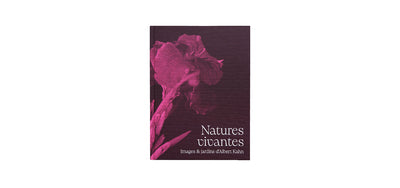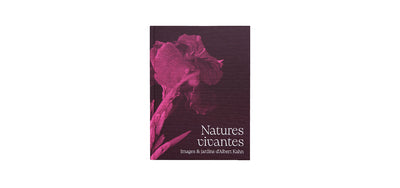Natures vivantes - Images et imaginaires des jardins d'Albert Kahn
- Authors: Directeur éditorial Luce Lebart
- Publishers: XAVIER BARRAL
- Date of Publication: 2024-05-02
- Pages: 269
- Dimensions: 270mm x 205mm
Favoring an immersive reading, the work mixes still and animated images. In
echo with these images, creations of contemporary artists, made in and
from the Boulogne garden, extend and update the innovations which,
both formal and technical and aesthetic, saw the light of day in the gardens
by Albert Kahn.
Philanthropist, globetrotter, collector, Albert Kahn was also a
great lover of gardens. His two residences, in Boulogne – now
museum – and in Cap-Martin, on the Riviera, stood in the middle of gardens
inspired by his far-flung travels. Fir trees, tree ferns, rose gardens and
orchards, species from far away such as agaves, ginkgos, aloes,
Atlas cedars, Colorado spruces or Himalayan birches,
were spread out among the rhododendron and bluebell bushes:
Beyond their horticultural magic, Albert Kahn's gardens were also a place
of photographic and cinematographic experiences.
During the first thirty years of the twentieth century, over the seasons and
years and in parallel with his Planet Archives project, Albert Kahn
produced thousands of color images on glass, true "natures"
living", from his two gardens in Boulogne and Cap Martin. It is not a question
from a descriptive botanical approach, nor to bring together studies for the purpose
painters as was often done at the time. The operators
capture color to document gardens both in space and
over time and over several years. This approach is totally
innovative: the images produced question the power of plants. Flowers and
trees become photographic subjects. Autochromes, stereoscopic plates,
but also filmcolor unveil a unique and little-known collection in the world.
through the prism of plants, research on the
capturing the colors of reality (exploration of possible techniques of
autochrome), as well as scientific studies on plant neurobiology,
the intelligence of plants, their memory, their means of communication and their
internal life (hatching, blossoming, decimation). Produced in a laboratory
located in the heart of the Boulogne gardens by a pioneer of scientific cinema,
Jean Comandon, the films The Growth of Plants or Blossoming of
some flowers immerse the reader in the marvelous. Science, cinema,
color and poetry intersect in a context which sees the practice of
horticulture and a taste for gardening.
Share

